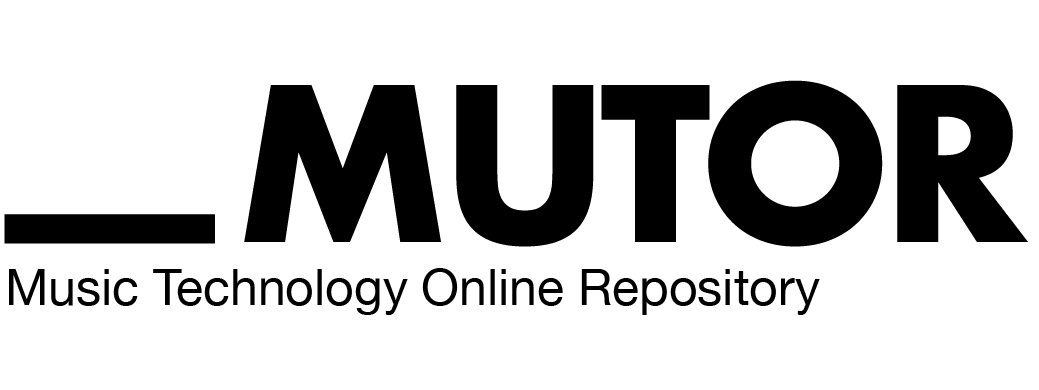Unit 1: The Total Artwork in the Age of Telematics A Hyperessay by Randall Packer
Synopsis
Over 150 years ago, the German composer Richard Wagner in his historic essay “Outlines of the Artwork of the Future,” defined the Gesamtkunstwerk (Total Artwork) as the integration of the arts through music drama and the community of theater. In the virtual realm of Wagner’s theater, he imagined the future of multimedia as a darkened arena for the immersive synthesis of music, poetry, visual effects and surround-sound reverberance. Wagner’s objective was to suspend the audience’s disbelief, and to “forget the confines of the auditorium… which seems the wide expanse of the whole World.” Fast forward through the annals of media histories, we discover a trajectory in which artists, technologists, and visionary thinkers have imagined a new kind of Gesamtdatenwerk (Total Datawork), the totalization and synthesis of the arts unfolding in the cloud. According to British theorist Roy Ascott, “the individual user of networks is always potentially involved in a global net, and the world is always potentially in a state of interaction with the individual.” Today more than ever, in the wake of the pandemic, the wide expanse of the whole world resides on our desktop, a stage for networked experiences we engage in daily, as well as those that don’t yet exist. This lecture/performance by Randall Packer is an invitation to venture together into the Deep Third Space to imagine and explore new multimedia potentialities and realizations of the community of theater in a globally connected culture.
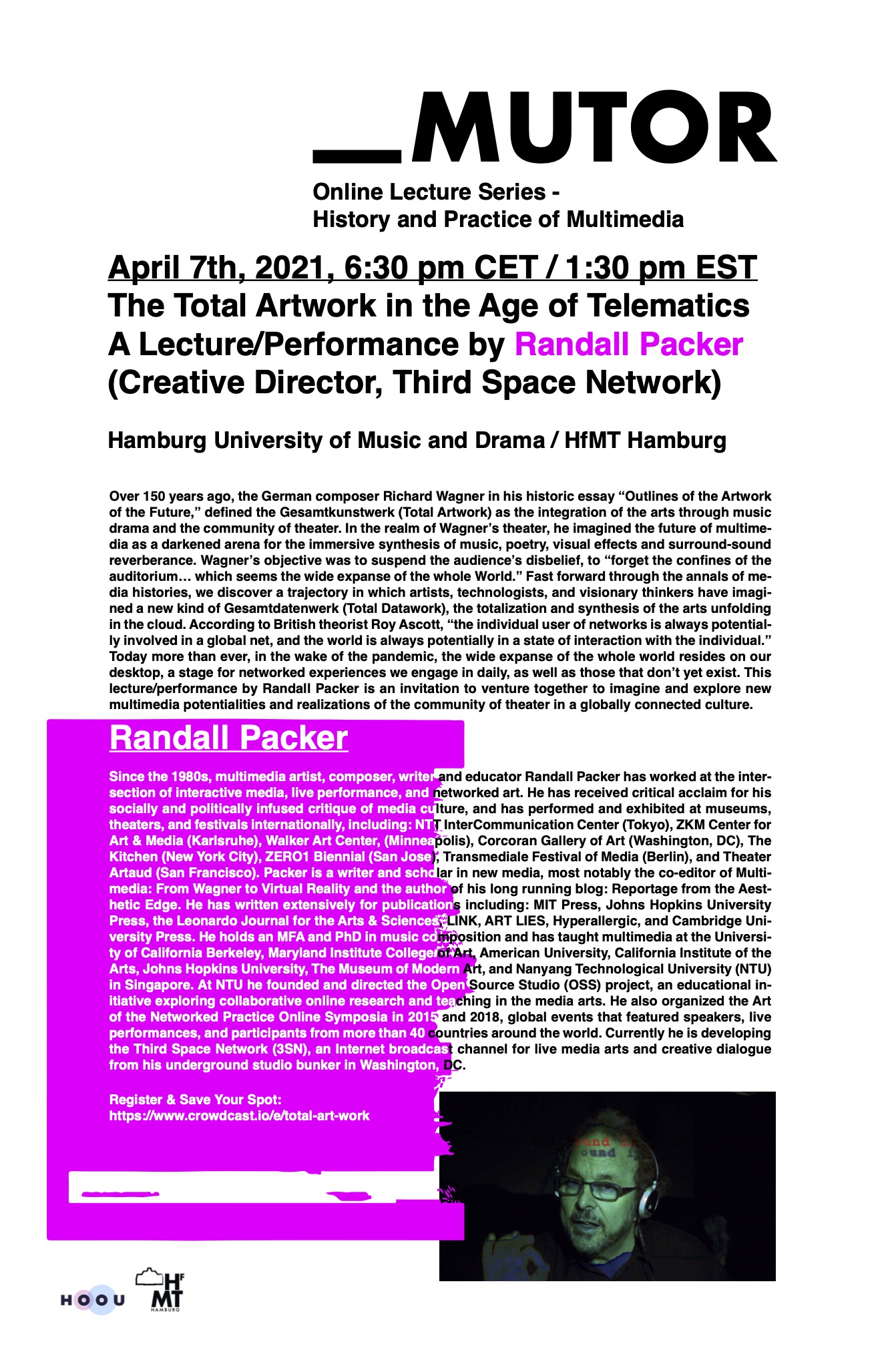
The original version of this essay can be found in Randall Packer’s website.
Pre-Ramble
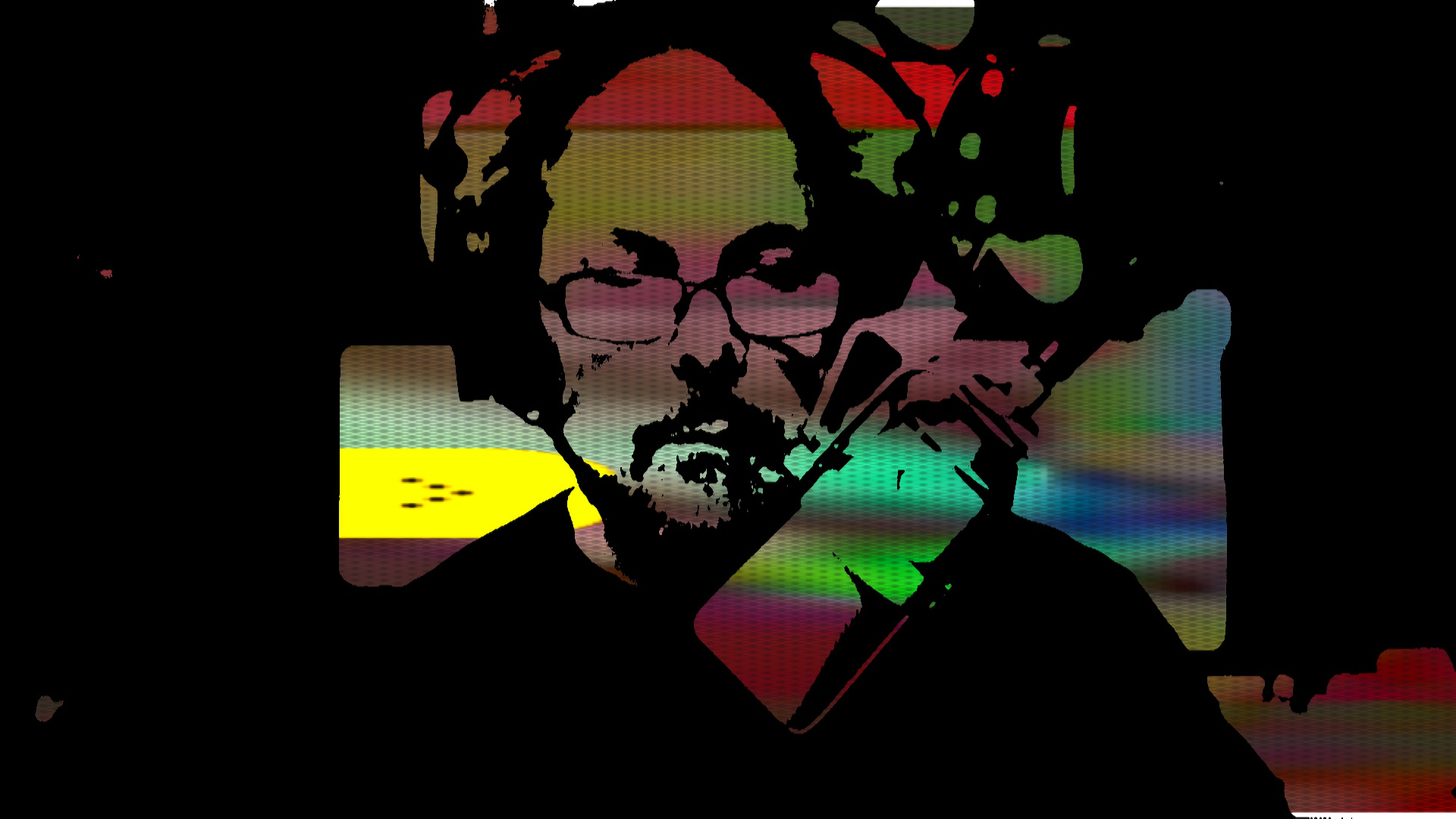
This is a multimedia journey through time and space, a selection of writings, images, and extensive links to artist sites, video documentation, Wikipedia entries and other Web resources, which combine to tell a story of the evolution of multimedia, from the total artwork of Richard Wagner to the present age of telematics. We’re not even sure when the transition took place, because the total trajectory is an evolving world created, a world we can enter into, from our desktop and mobile devices… a world that connects us to remote places, a virtual stage, a globally connected community of theatre, the Total Artwork in the Age of Telematics.
// Before Telematics (BT) //
Wagner’s Total Artwork (gesamtkunstwerk)
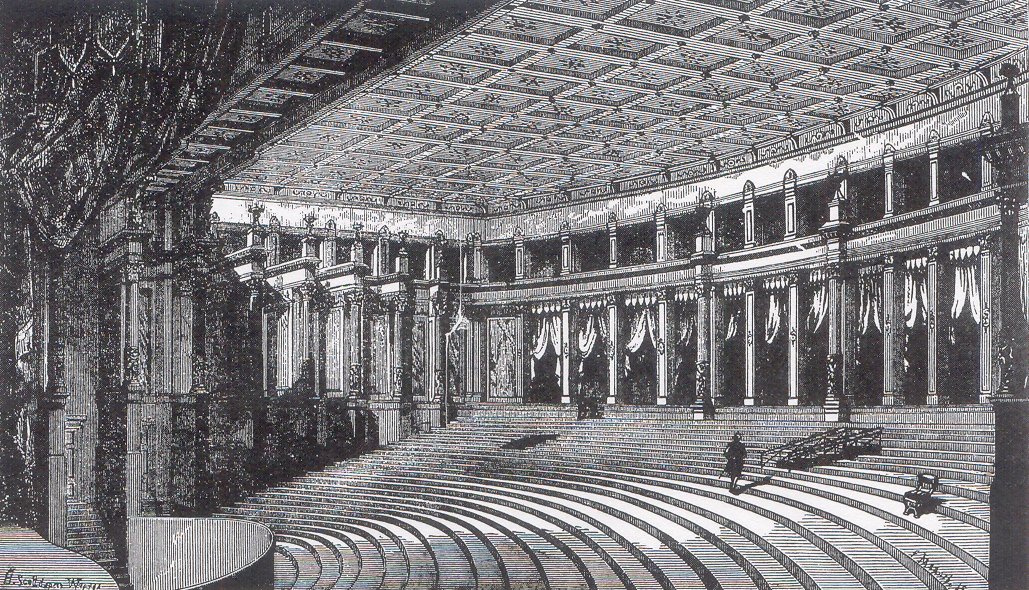
We begin our journey with composer Richard Wagner, whose objective in the creation of the Artwork of the Future, was to suspend the audience’s disbelief through the gesamtkunstwerk, the total artwork, the integration of the arts, through the immersive effects of sound, music, stagecraft, poetry, gesture, combined as he said, to “forget the confines of the auditorium… which seems the wide expanse of the whole World.” In 1876, he opened the Bayreuth Festspielhaus theater, Germany for the premiere of the complete four-opera cycle of Der Ring des Nibelungen (The Ring of the Nibelung): designed as a totalizing sonic experience with ampitheatrical seating surrounded by reflective pillars that reverberated the music throughout the auditorium.
The Birth of Video Space (1936)

The first television broadcast by NBC was in 1936: the dissemination of signals & transmissions, noise, filters, cathode rays, and scan lines: for the first time, the electronic image pulsed through the circulatory system of the television network. This is NBC’s first attempt at actual programming, a 30-minute variety show that featured speeches, dance ensembles, monologues, vocal numbers, and film clips.
Nam June Paik, Global Groove (1973)
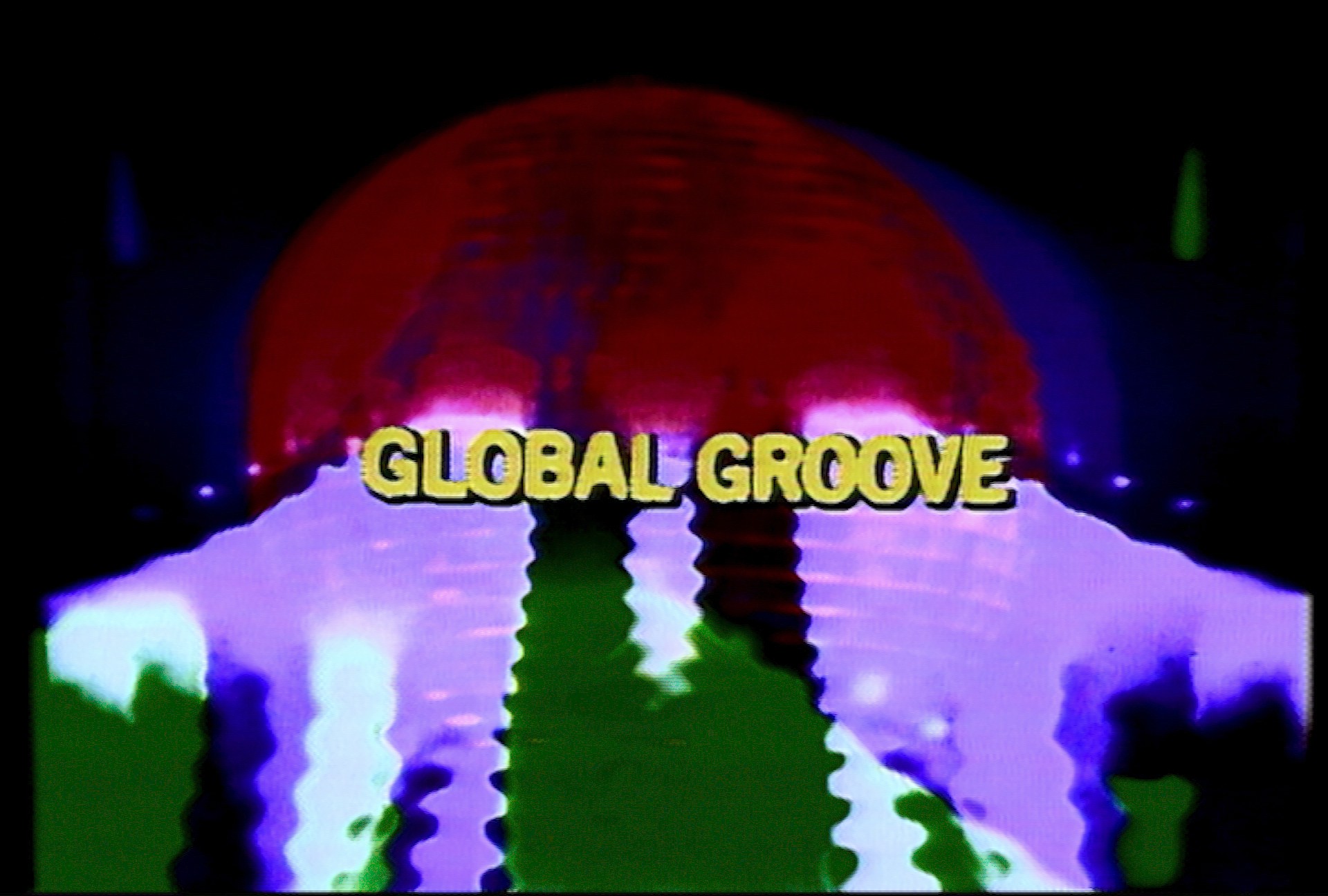
Nam June Paik, the info-shaman of video, suggested that art should embrace the technologies of the information society to exorcise the demons of a mass-consumer, technology-obsessed society, injecting liberal does of “cybernated shock and catharsis.” In Global Groove, video synthesis provides the environment for movement, reflecting and transforming the image as it travels across the space of the screen.
John Cage & Merce Cunningham, Variations V

In the multimedia performance work Variations V, created by John Cage and Merce Cunningham, with video and slide projections by Stan Vanderbeek, they brought the fusion of music and dance into video space as a fluid exchange of collage, superimposition, and indeterminacy. The aleatoric interaction between movement, sound, and image breaks apart and coalesces, the interdisciplinary synthesis of art and technology, sensors, projections, synthesis, and tape: organized and totalized as a musical composition and video collage using the techniques of chance.
Frank Gillette & Ira Schneider, Wipe Cycle (1969)
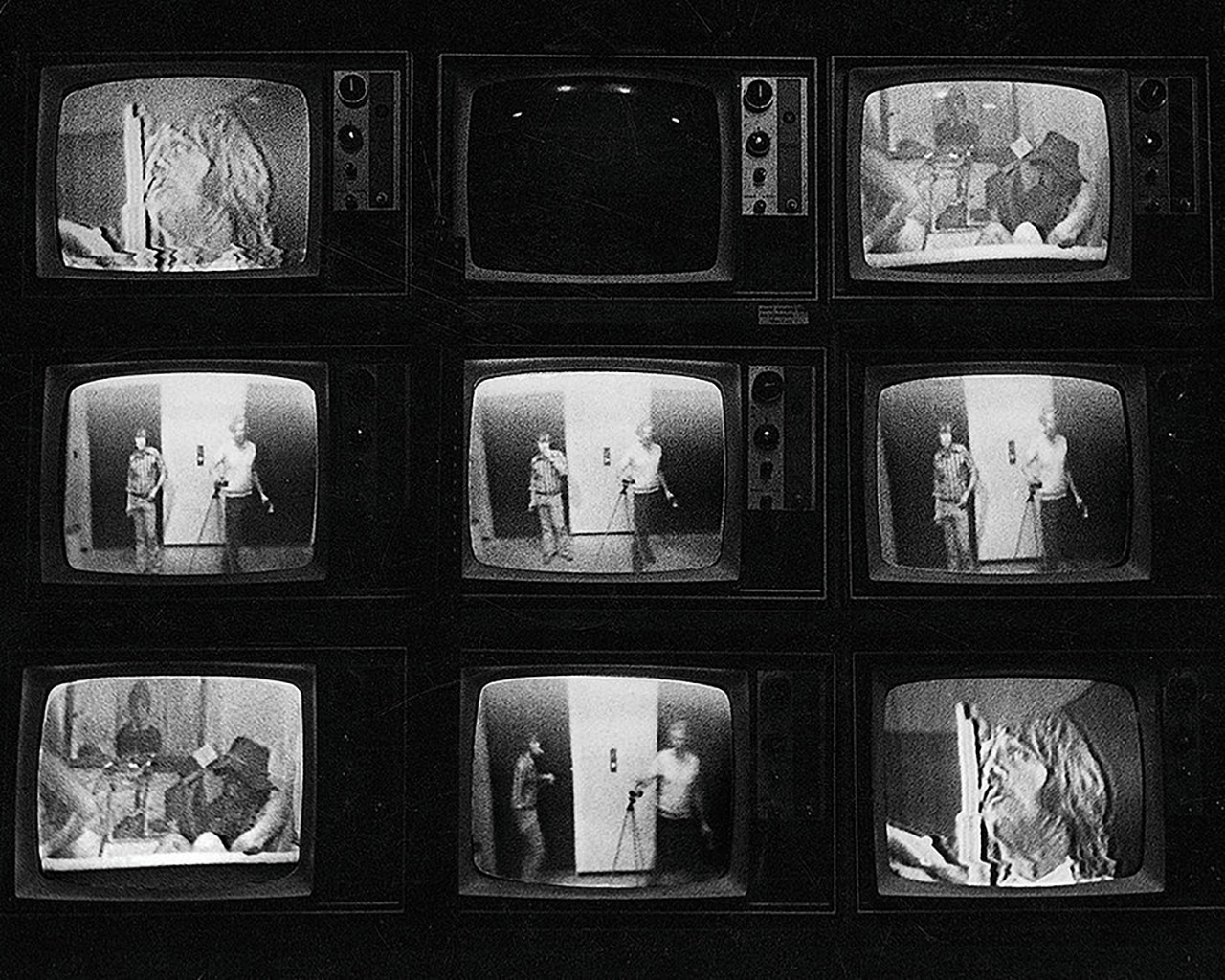
Wipe Cycle by Frank Gillette and Ira Schneider was one of the first installations to include live video interaction, the viewer is now the performer, performing latencies, delay, signal flow, the flow of media captures the viewer in real-time, cascading through the monitors, a process of ingestion that discursively shifts the viewer through the temporal environment of video space.
Telematics: the Network as a Third Space
We now find connection and theater in the third space, a place that joins the local and the remote into a shared networked space that defies distance and geography. It is the third space, where we now spend vast amounts of time. However, the third space, my term for telematics, in which we are all connected – human and machine flowing through the nervous system of the Internet – has a storied, yet relatively unknown history. Let’s begin…
Kit Galloway & Sherrie Rabinowitz, Satellite Arts Project ‘77

Joining the US East Coast & West Coast, Satellite Arts Project ’77 (A Space With No Geographical Boundaries) beamed images & sound off of a NASA satellite feed, producing a magic of echoing latencies and collage, dancers exploring, merging, transluscent. For the first time, Kit Galloway & Sherrie Rabinowitz created a telematic stage of disembodied togetherness.
Kit Galloway & Sherrie Rabinowitz, Hole-in-Space
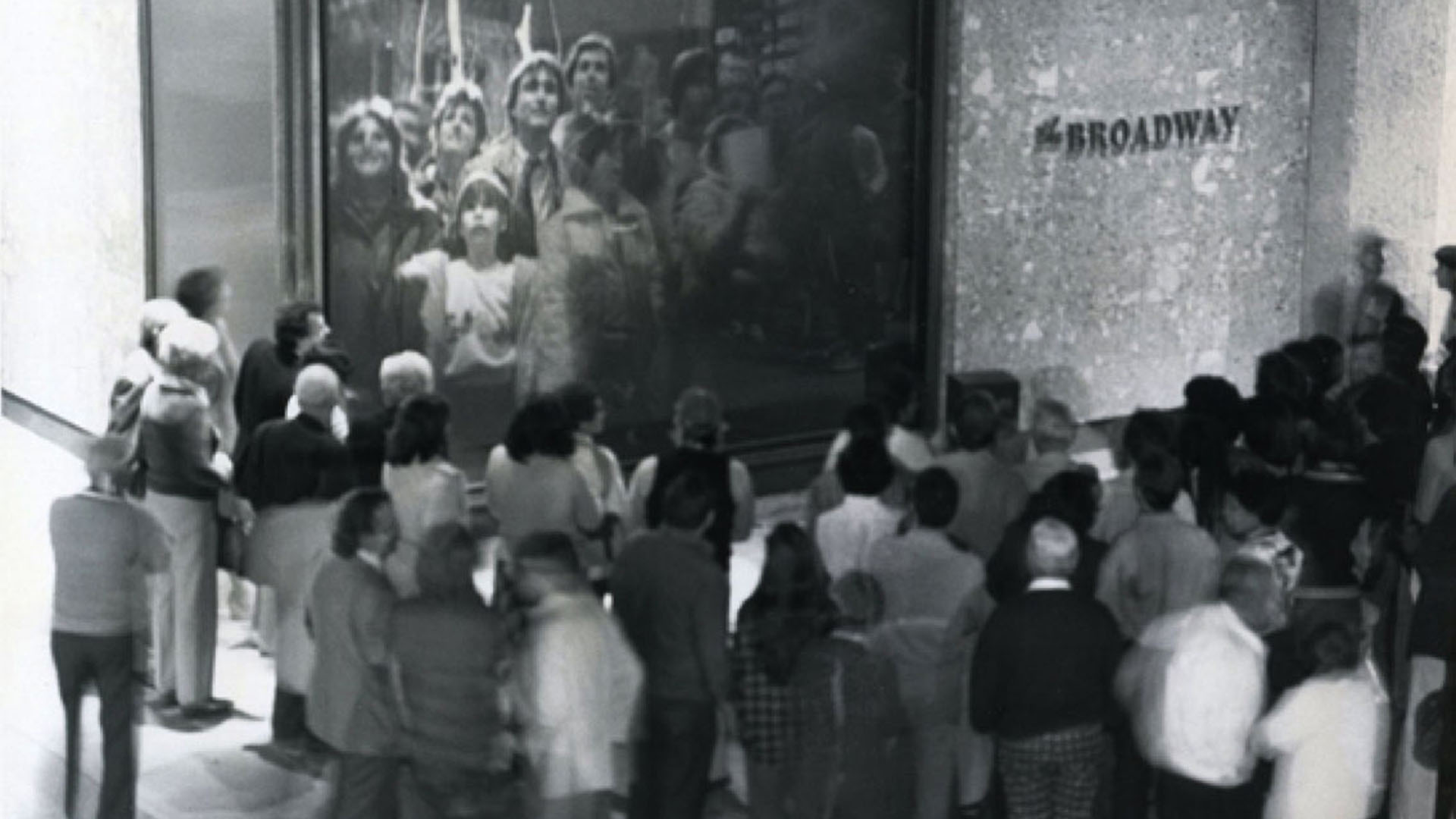
Puncturing the distances that lie between us, between Los Angeles and New York City, Hole-in-Space was the birth of networked conferencing on steroids, producing high resolution emotional bandwidth, as the artists described, a meta-social-design, a networked installation, inviting the viewer to defy the limitations of space and time, the exalted joy of overcoming the physics of the known world, a new community of theatre, spontaneous, created in the moment by an audience no longer an audience, now agents of interaction.
Nam June Paik, Good Morning, Mr. Orwell, 1984
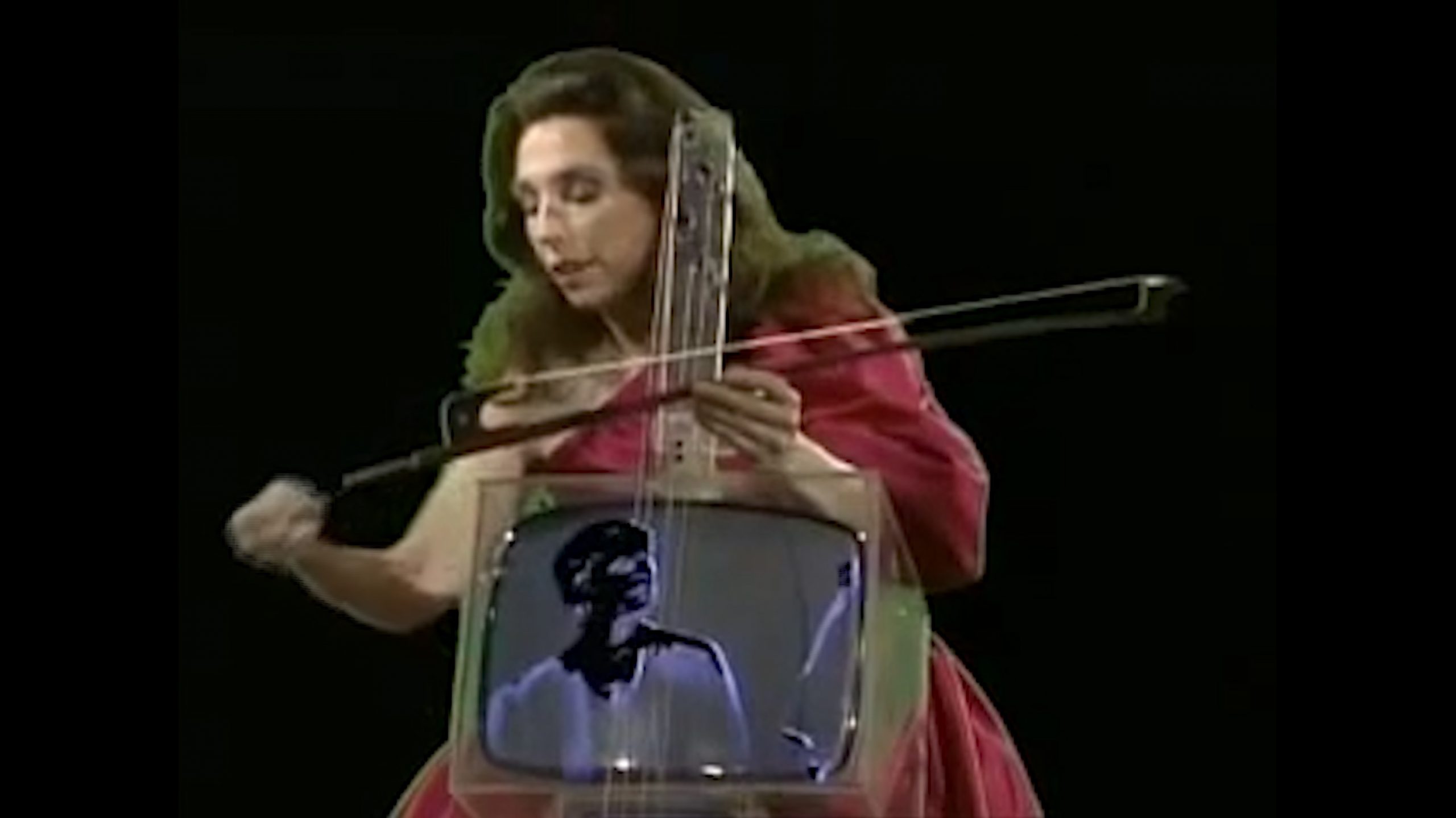
Nam June Paik, considered the father of video, created Good Morning, Mr. Orwell, proving 1984 was not the Orwellian 1984 we might have imagined, rather between Paris and New York, a community of theatre joined artists over the airwaves, imagery from one place was inserted into the other place, in which Marshall McLuhan’s vision of a globally connected world of electronic impulses became the total artwork of the network, a tele-communications world that for a few hours belonged to artists who seized the opportunity!
Net Art as Theatre of the Senses
It’s as though French poets Arthur Rimbaud and Antonin Artaud had just time traveled into the future to the early days of Net art experimentation. Two of the seminal projects of the 1990s, Jodi.org and Mark Amerika’s Grammatron, revel in an intoxicated celebration of the senses with a new form of interactive-networked-experiential-transcendental-poetic-theater.
Joan Heemskerk & Dirk Paesmans, Jodi.org (1995)
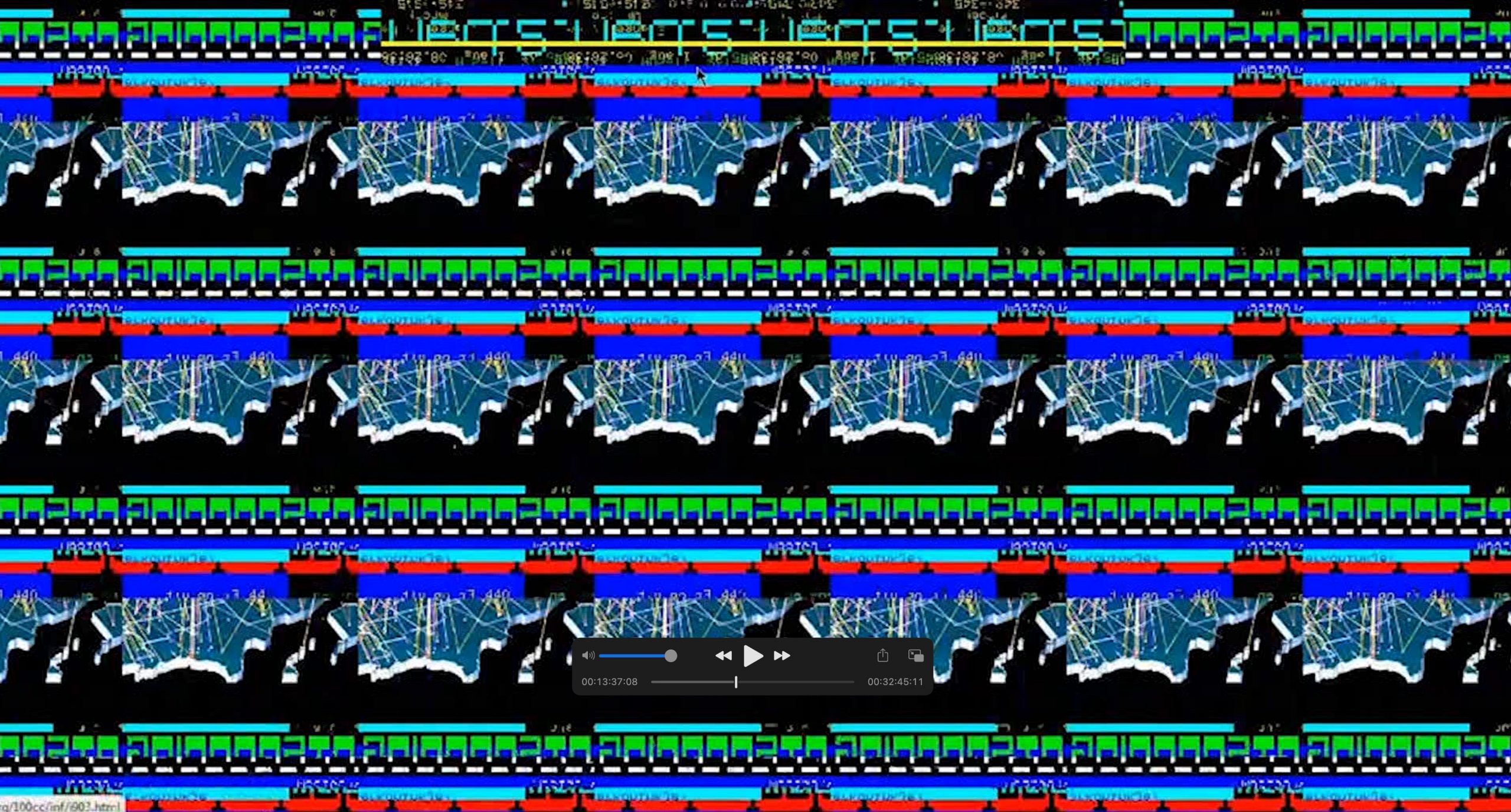
“We are honored to be in somebody’s computer” boast the Jodi.org creators, Joan Heemskerk & Dirk Paesmans, who have not only gone beyond the interface, they have abolished it. Jodi pages flash and burn, scrolling and displaying uncontrollable computer code, fragmented shards of interface elements (menus, buttons, etc…), code stripped bare of its functionality, a once symbolic language now transformed into a surreal magic theater of the absurd. I dare you to try.
Mark Amerika, Grammatron (1997)
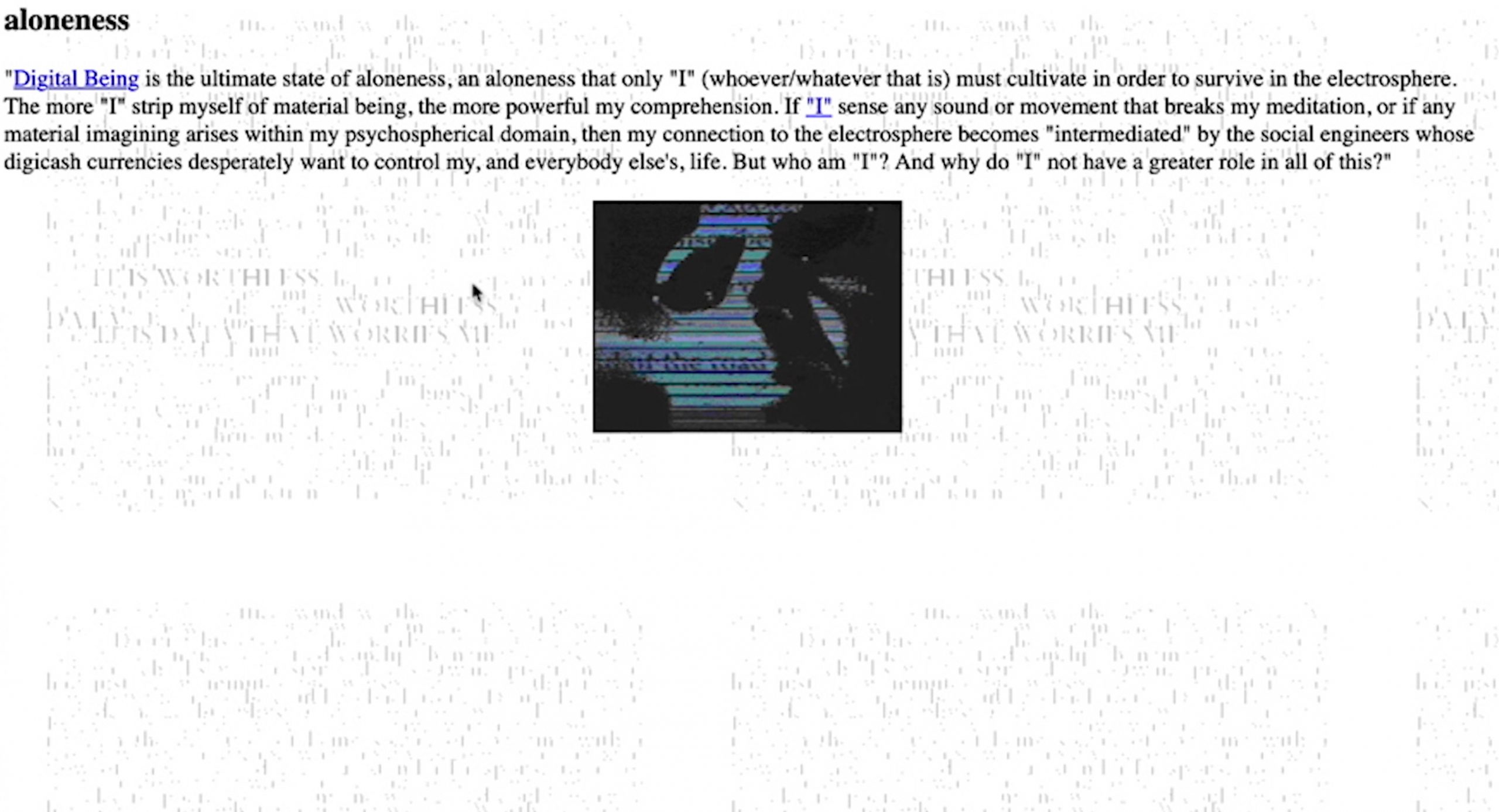
Like William Gibson’s science-fiction novels, including the legendary Neuromancer, the synthetic world of Grammatron, with its de-centered narrative, meandering story-threads, and immersive chaos, confuses and intertwingles real life, virtual sex, and the “search for God.” Gradually, we are introduced to Mark Amerika‘s tangled web of the Grammatron hypertextual, hypermediated story landscape: Abe Golam, “legendary info-shaman,” Nanoscript, “desire’s own language..a forbidden data that had been permeating the electrosphere,” Golam’s avatar-sweetheart Cynthia Kitchen, the self-alienation of Digital Being, and the quest for creative immortality.
Telematic Hybridities
After the initial rush of Web-specific net art, the network was co-mingling and blurring the edges of the space in between the virtual and the physical. The arena of net art leapt off the Web page to be integrated into the installation, the performance, even the cellular space.
Ken Goldberg & Randall Packer & Gregory Kuhn & Wojciech Matusik, Mori (1999)
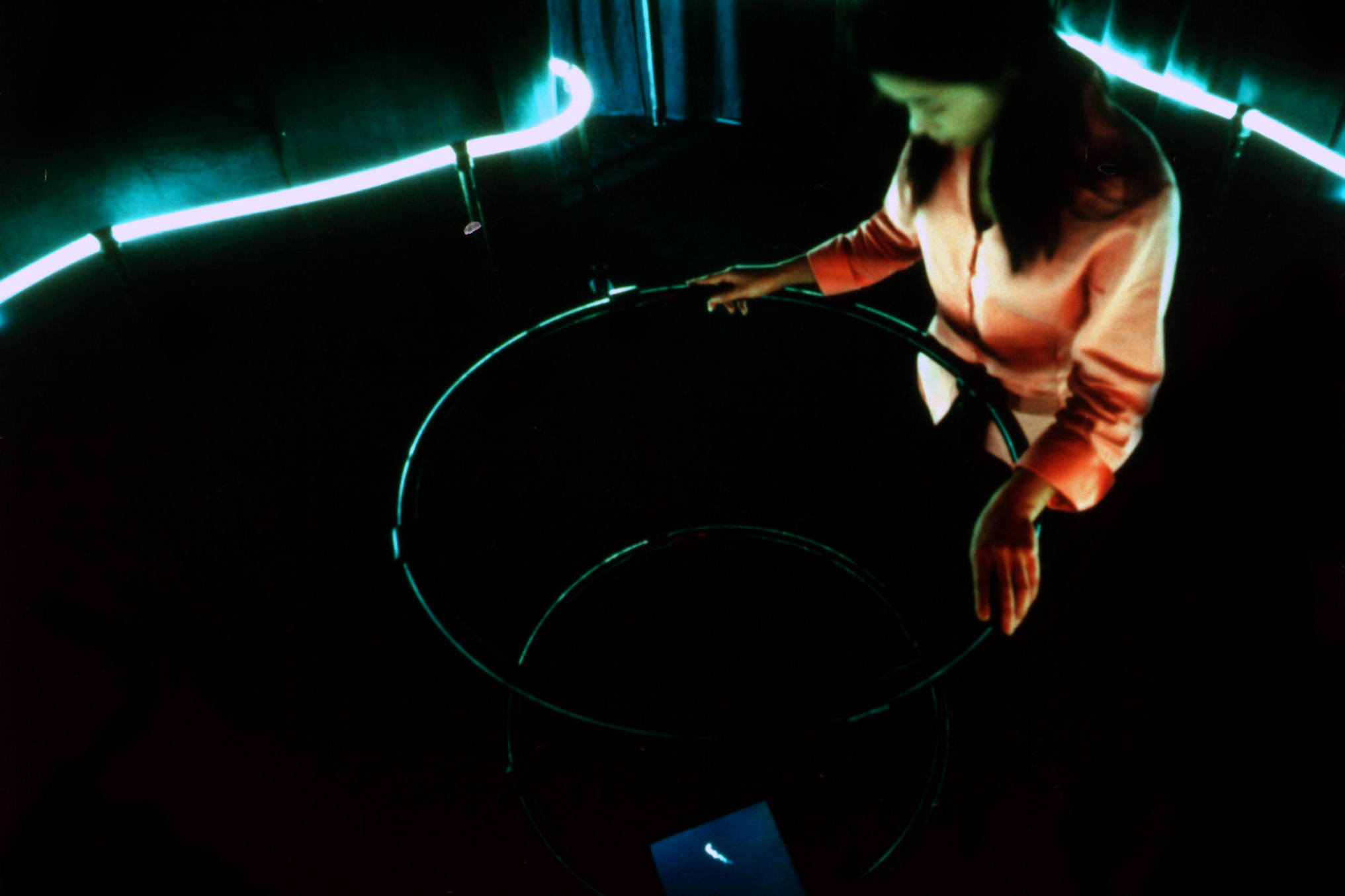
In Mori, created by Ken Goldberg, Randall Packer, Gregory Kuhn, and Wojciech Matusik, we enter the earth, virtually, telematically, data received from the University of California, Berkeley Seismograph, the notorious California Hayward Fault at the edge of Western Civilization. As we enter, a live translation of vibrations, pulsations, rumblings, a reminder of the earth’s fragility, and our own memento Mori… a reminder of death, emanating from the activity of deep seismic disturbances, translated in real-time as data flow coursing through the spiraling spatial trajectory towards the center, to the heartbeat of the earth.
Golan Levin, Dialtones: A telesymphony
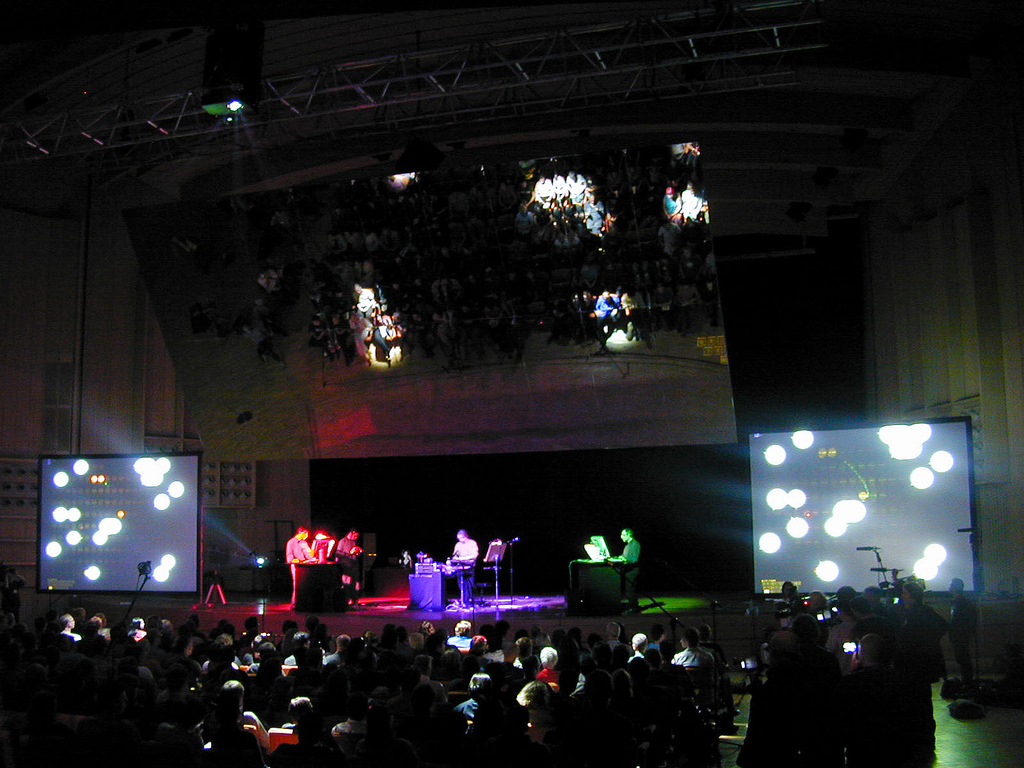
Dialtones: A Telesymphony, created by Golan Levin & collaborators for 21st century mobile phones, is a symphony of pure cellular cacophony. Instead of being asked to turn off their phones, the audience, lit & mirrored, becomes the orchestra, performing generative mobile sounds dialed in & captured by the composers. The sounds of disruptive chirps, ringtones, and vibrations, those impulses that drive our nervous system each and every day, become a music for our time
Ben Rubin & Mark Hansen, Listening Post, (2002)
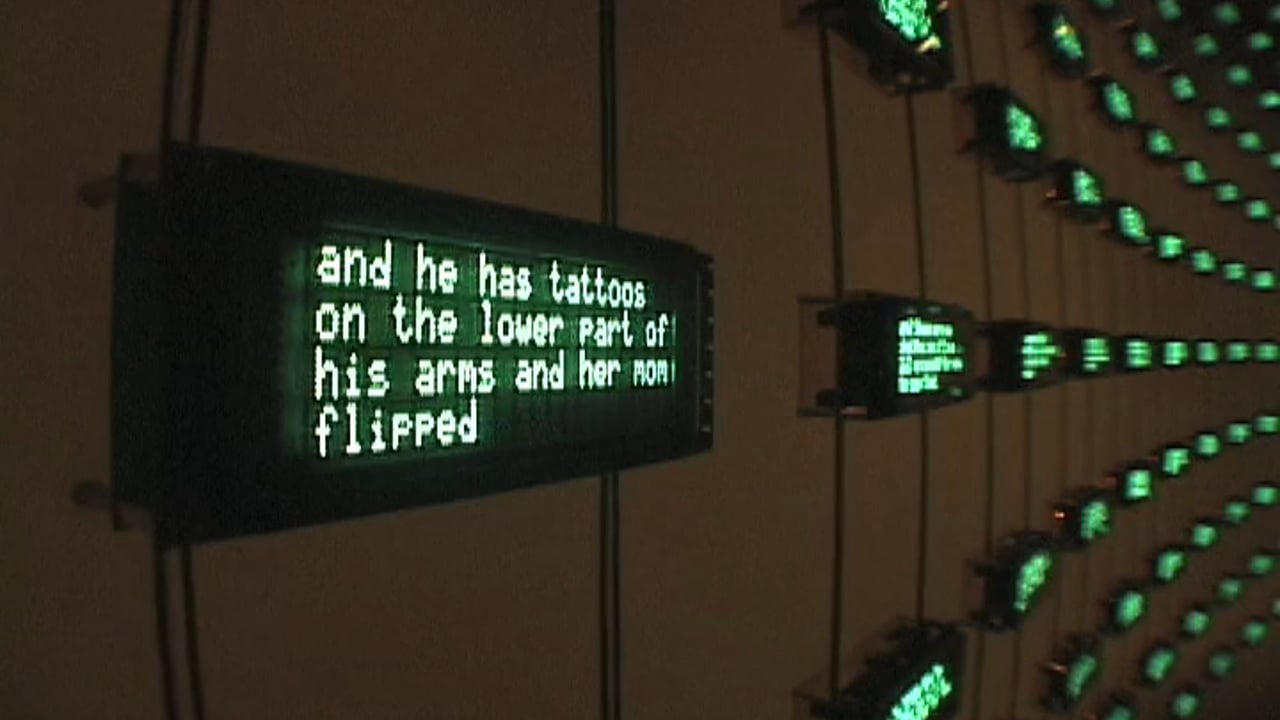
In Listening Post, we hear the chatter, chatter, chatter of the Network, the incessant flow of global chat, captured anonymously, revealing everything and nothing about the individuals engaged in collective dialogue that never ceases, 24/7. There is something sadly poignant about these post-human, disembodied utterances of those, attempting to be heard. It seems that the artists Ben Rubin & Mark Hansen are asking: is anyone listening?
Is There Love in the Telematic Embrace?
Are we, as author Sherry Turkle describes in her book, Alone Together?, disengaged from the real? Turkle explains how the boundaries between the real and the virtual, the animate and the inanimate are eroding, that “identity on the computer is the sum of our distributed presence.”
Or as Roy Ascott describes in his essay, Is There Love in the Telematic Embrace, “the very technology of tele-communications extends the gaze, transcends the body, amplifies the mind into unpredictable configurations of thought and creativity.”
So we pose the question: in the eroding boundaries between the local and remote, the extension of the gaze beyond the confines of our physical reality, electronic communications as the new artistic content, is there love in the telematic embrace?
Paul Sermon, Telematic Dreaming (1992)
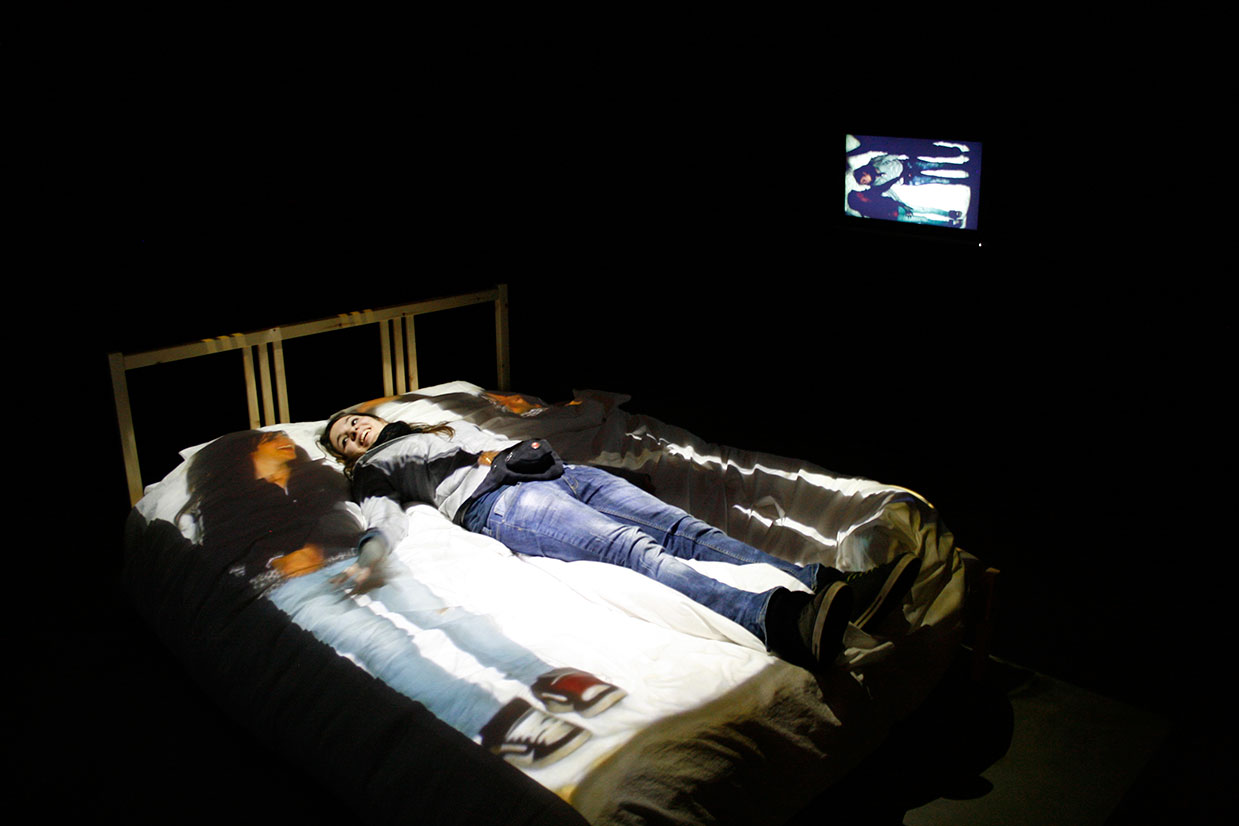
Touching, caressing, feeling, hugging, holding: Paul Sermon in Telematic Dreaming explores the telematic embrace in its actualization, yes, you can feel it, the body that lies next to you, virtually in the third space, it is not an abstraction, it is our reality, it’s where we live, together. It’s where we are alone, together, where our bodies are trying to negotiate and make sense of distance and closeness all at the same time.
Annie Abrahams, The Big Kiss (2007)
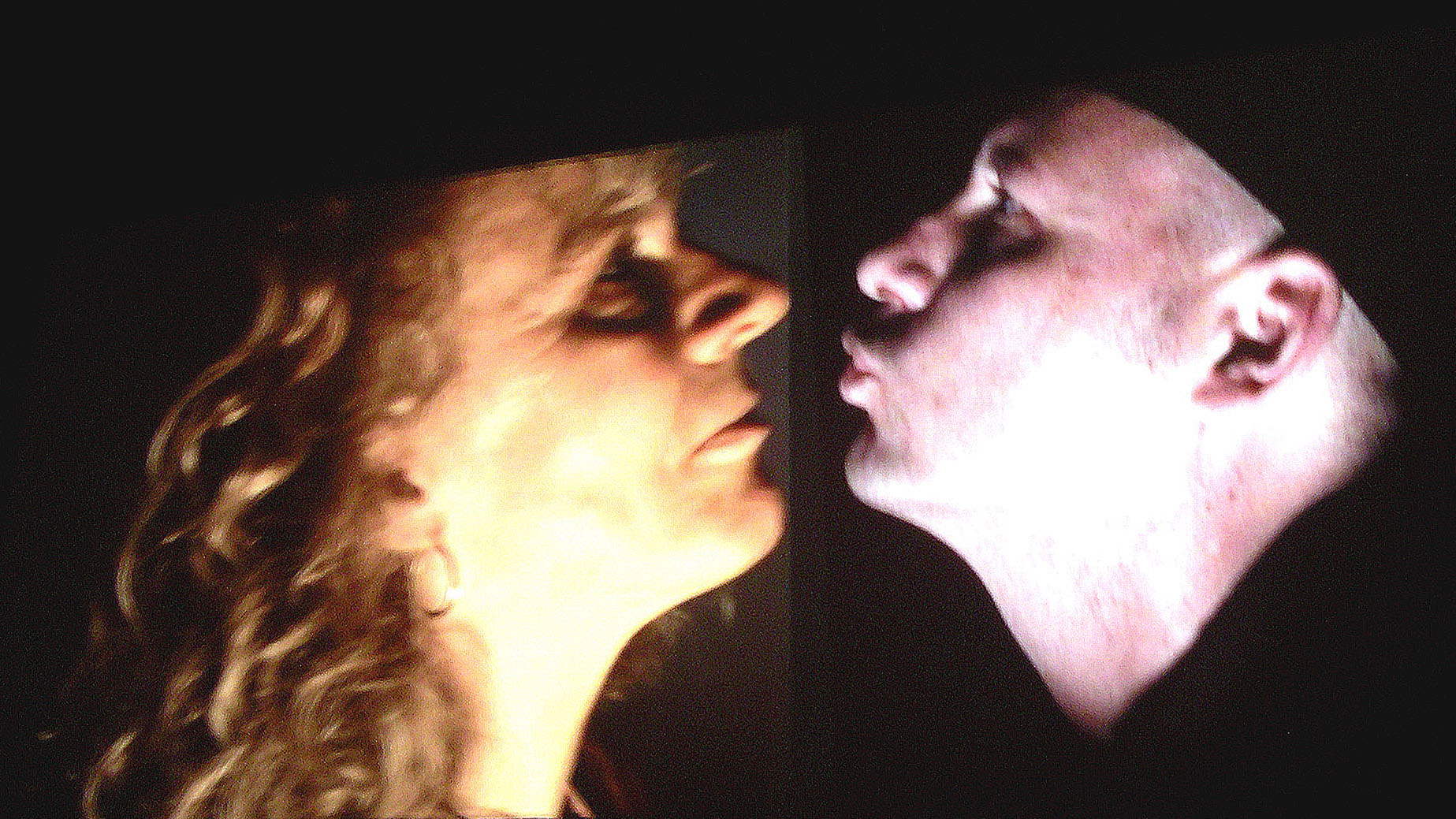
Once again, Annie Abrahams plays out the telematic embrace in The Big Kiss, is the kiss a relic in the aftermath of the Network? Do we need to redefine intimacy? What is intimacy? Have we lost it? Are we rediscovering it? In our distributed third space presence of separation, are we losing the ability to differentiate between what is real and what is not? What is human touch becoming?
Christopher Baker, Hello World (2008)

The intensity of our social chatter is deafening, here, in Hello World by Christopher Baker, every utterance is a personal confession that has been downloaded from YouTube, an amorphous, cacophonous symphony that drowns out each and every voice, crying out to be heard, like lost souls in the night. We can try and touch, we attempt to be heard, to tell our story, but can we be heard when everyone is speaking, alone and together, at the same time?
Total Data Work (gesamtdatenwerk)
In Is There Love in the Telematic Embrace, Roy Ascott asks: “The question of content must therefore be addressed to what might be called the Gesamtdatenwerk – the total data work – and to its capacity to engage the intellect, emotions, and sensibility of the observer.” Now we find, the desktop, the interface to our data, is our theater, the mis-en-scene, the arena for play and connection.
Jon Cates, BOLD3RRR… Realtime: Reflections and Render-times (2012)
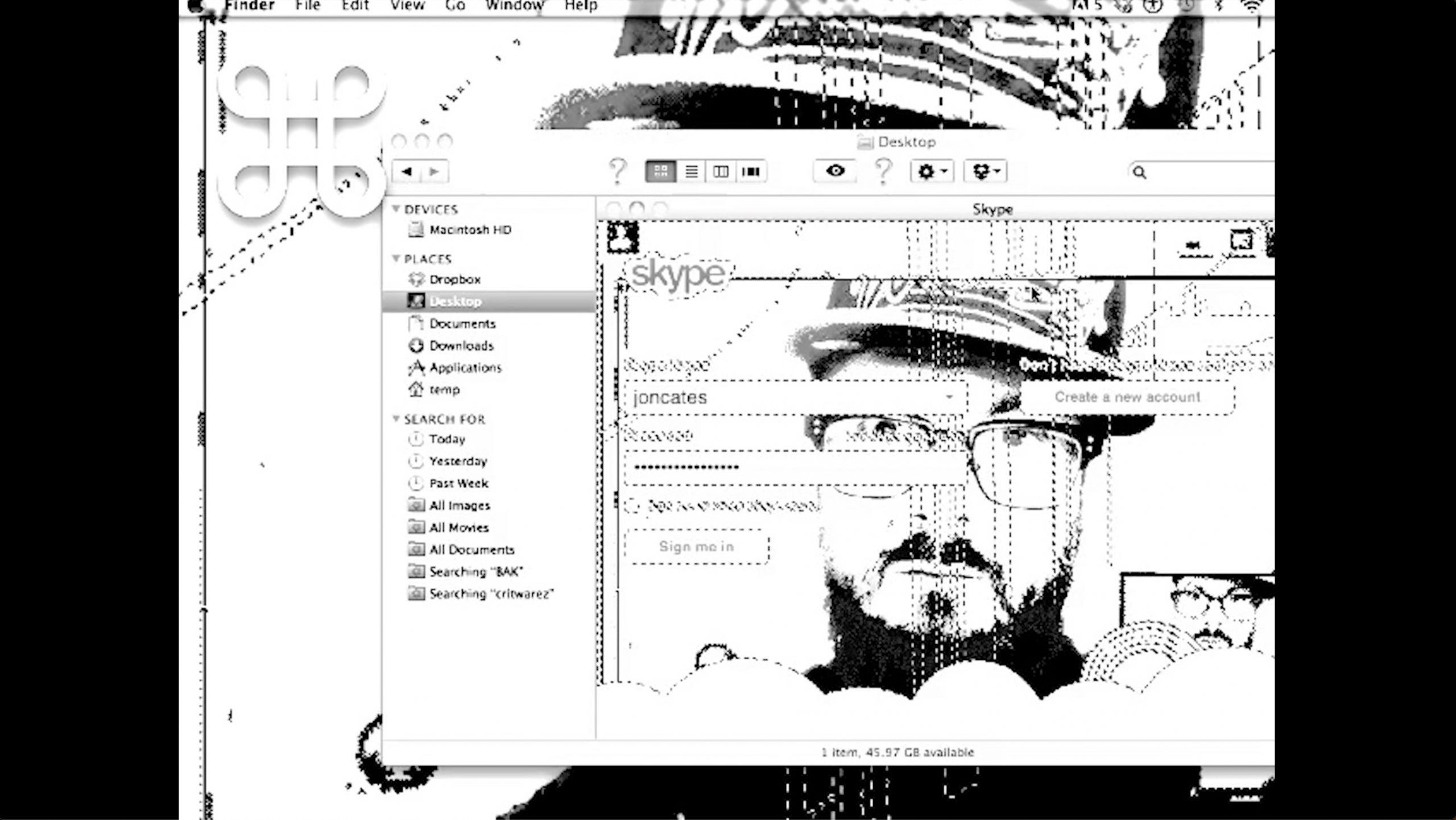
In thinking about the idea of the gesamtdatenwerk, we might also consider Jon Cates‘ stream-of-consciousness networked performance, BOLD3RRR… Realtime: Reflections and Render-times, as a kind of personal journey through the consumption of data, losing ourselves in the data, becoming the data in the space of glitch, artifacts, latencies, noise, and digital debris. On our desktops, we now perform the totalization of our Data.
Nicolas Maigret, The Pirate Cinema (2015)
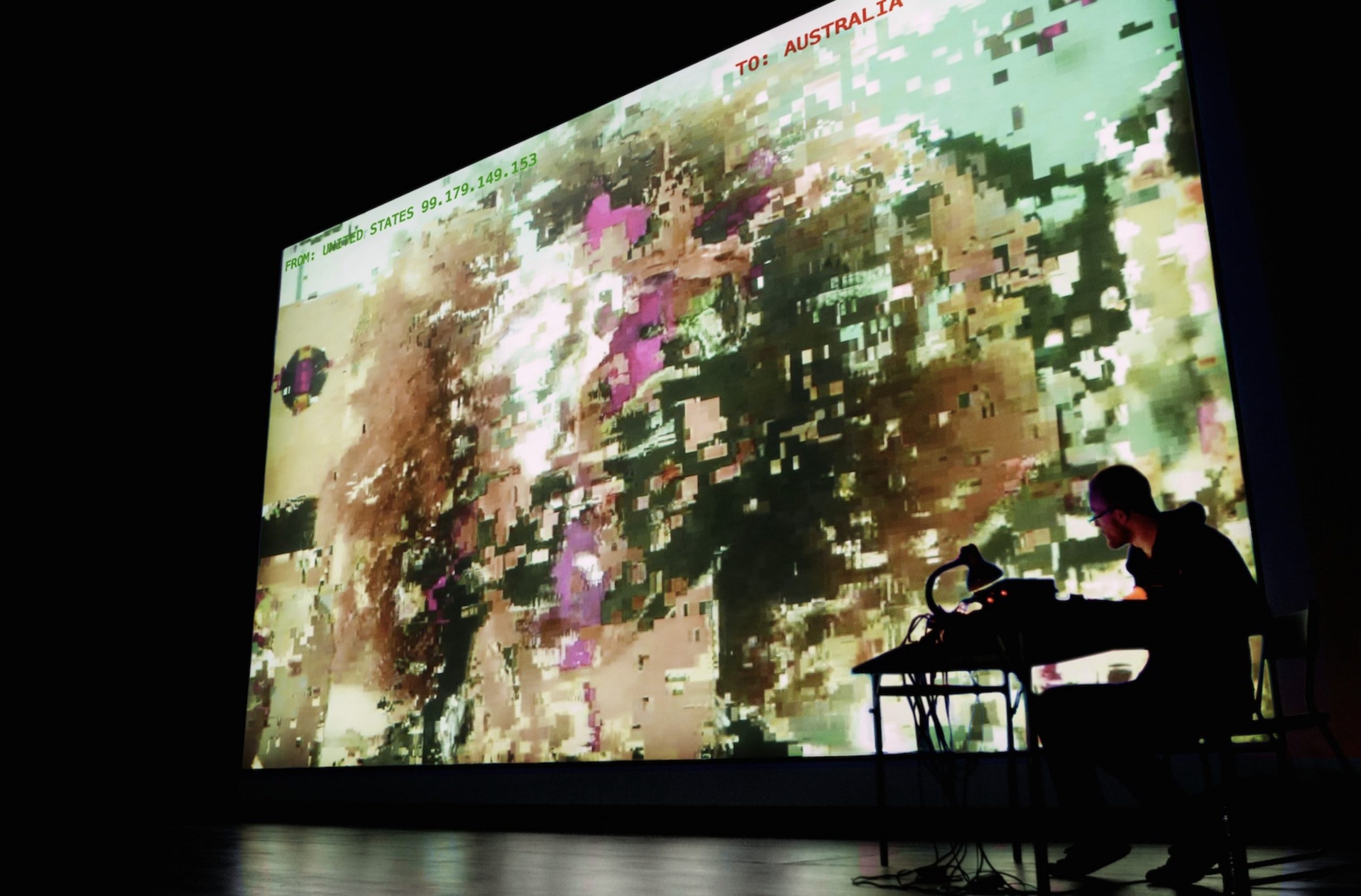
The Pirate Cinema by Nicolas Maigret is a disjunct flow of information, pirated and ingested, streaming across our desktops, tiny fragments of media propelled by those participating on the Network, a distributed BitTorrent theater, here captured, processed, and performed for analysis, for as long as you can withstand the constancy of this river of noise.
CODA - Happy Immersion
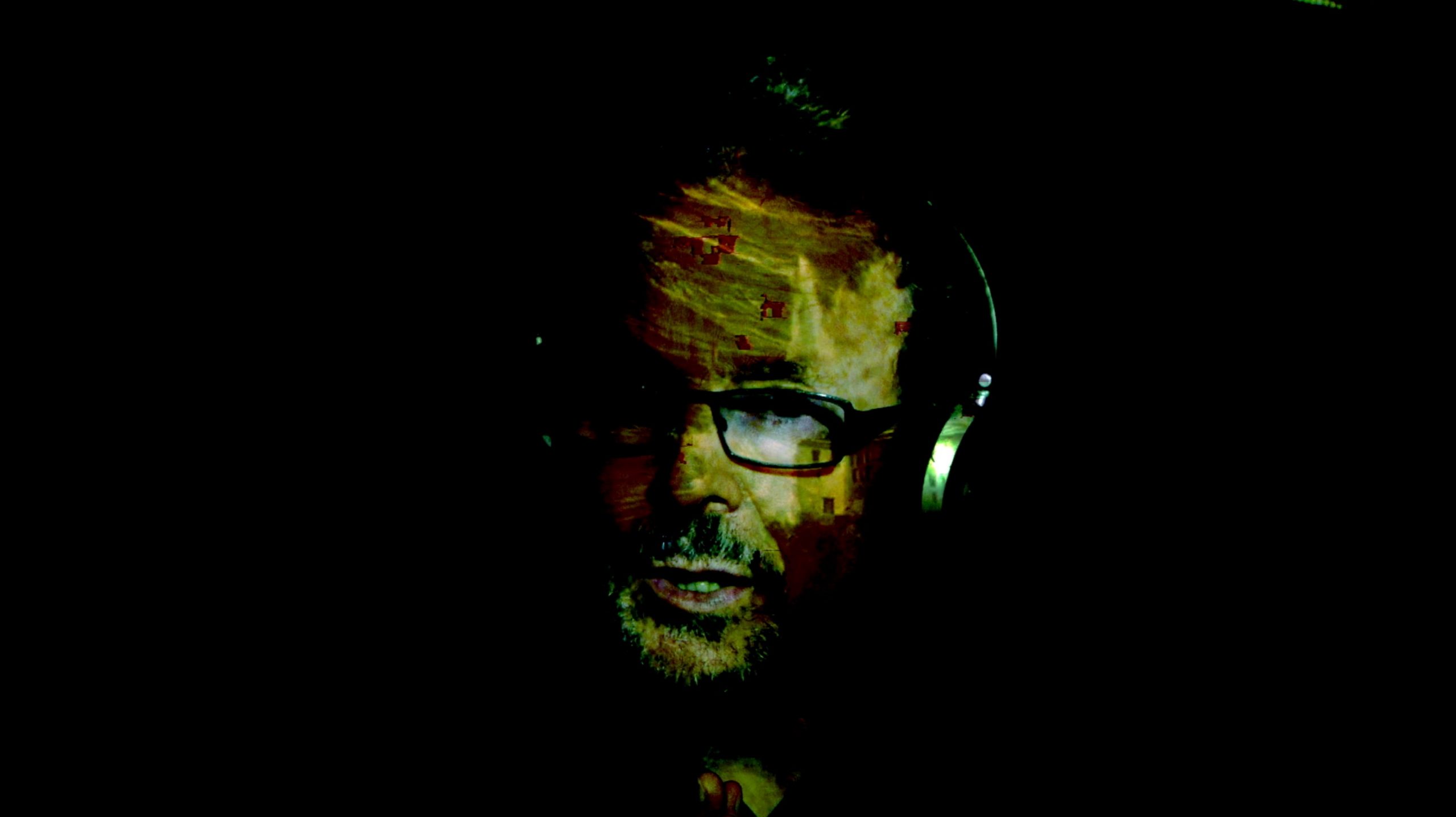
I leave you with a brief bit of reportage concerning the excavation I have undertaken into the world of multimedia, the network, and the digital debris that emanates from my underground studio bunker, where like Wagner’s theater, I tend to “forget the confines of the [studio]… which seems the wide expanse of the whole World.”
“The idea of ingesting media is an interesting concept. Like food or water or air, we devour an unquantifiable amount of media each today. It comes in the form of television or radio or computer-generated imagery. It bombards our sensory reception by air pressure or radio waves or light. Sometimes we are receptive to the transmission and sometimes we are completely unaware. We might take delight in the way our neurons feast on electronic signals, or it may cause us to feel utterly inadequate realizing there simply aren’t enough hours in the day to consume it all.
And furthermore, once we digest our daily portion of information, it resonates endless, a recapitulation and reorganization of content. Like one of those sticky melodies you just can’t erase from your memory, going round and round and round in your brain while you are heroically attempting to concentrate on the moment. Yes, this is the reality of our media diet, high on messaging, low on comprehensibility. And yet, we absorb and reabsorb it all, cycling through our nervous system and filtered out through our pores.
The question is whether or not to be concerned or if we are an adaptable humankind capable of readjusting our nervous system for this extension, as Marshall McLuhan warned us some fifty years ago, who believed that eventually we would develop a sort of psychic immunity. For now, I say, let’s enjoy the massive dose of adrenalin that accompanies this happy immersion.”
Randall Packer Underground Studio Bunker in Washington, DC June 27, 2021
References
Authors
Topics
- Before Telematics
- Net Art
- Telematic Hybridities
- Love in the Telematic Embrace
- Total Data Work (gesamtdatenwerk)
